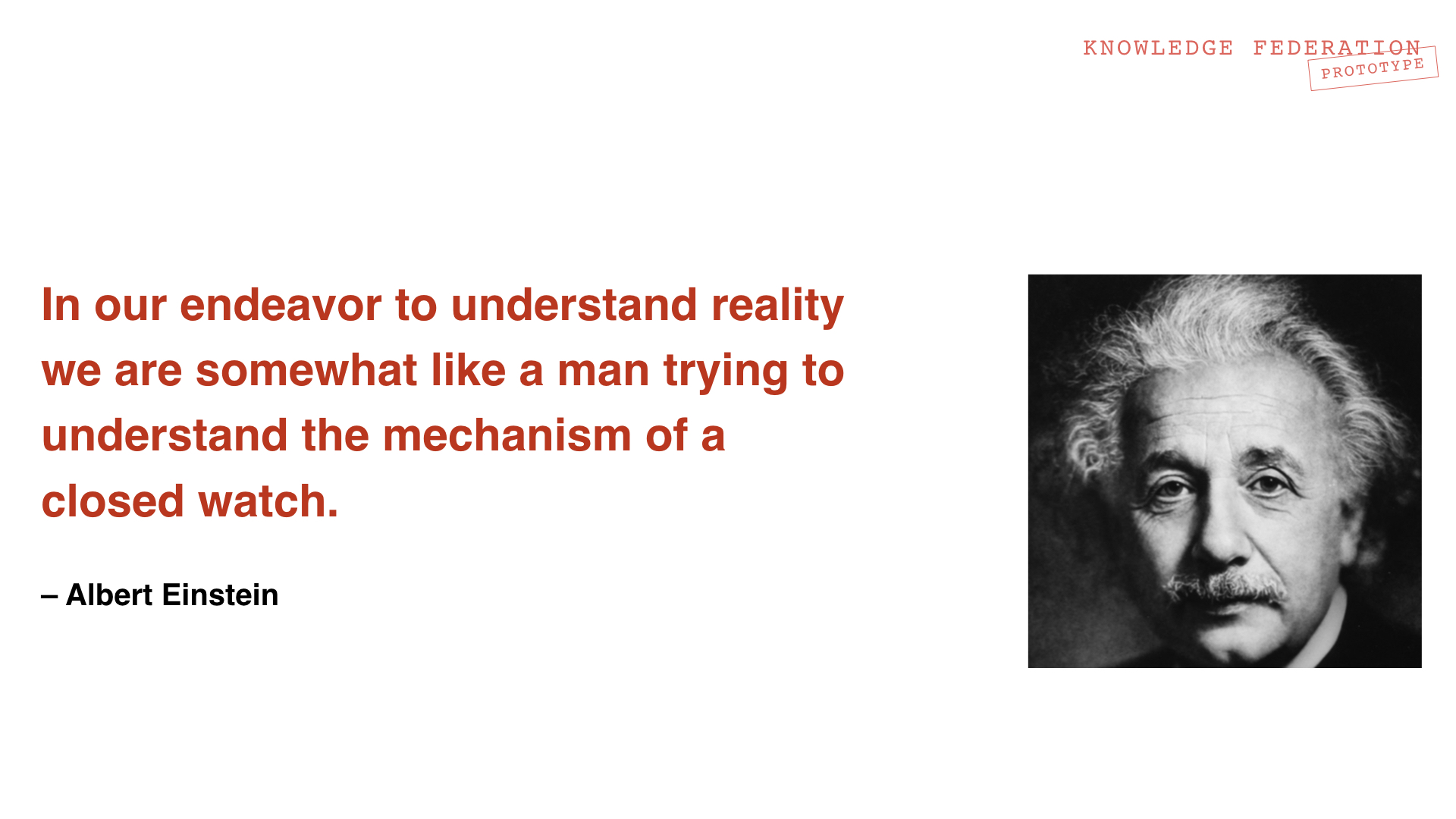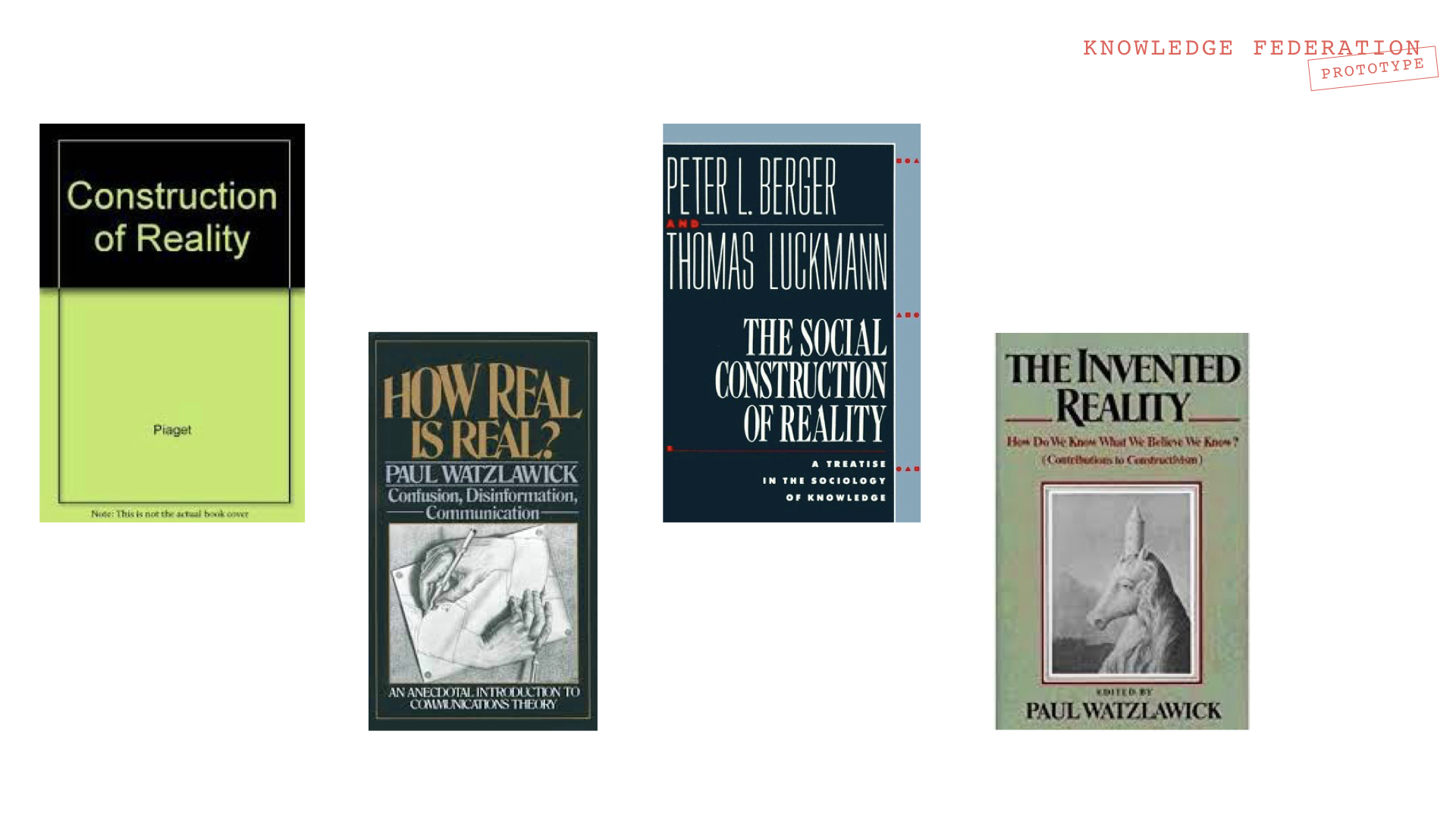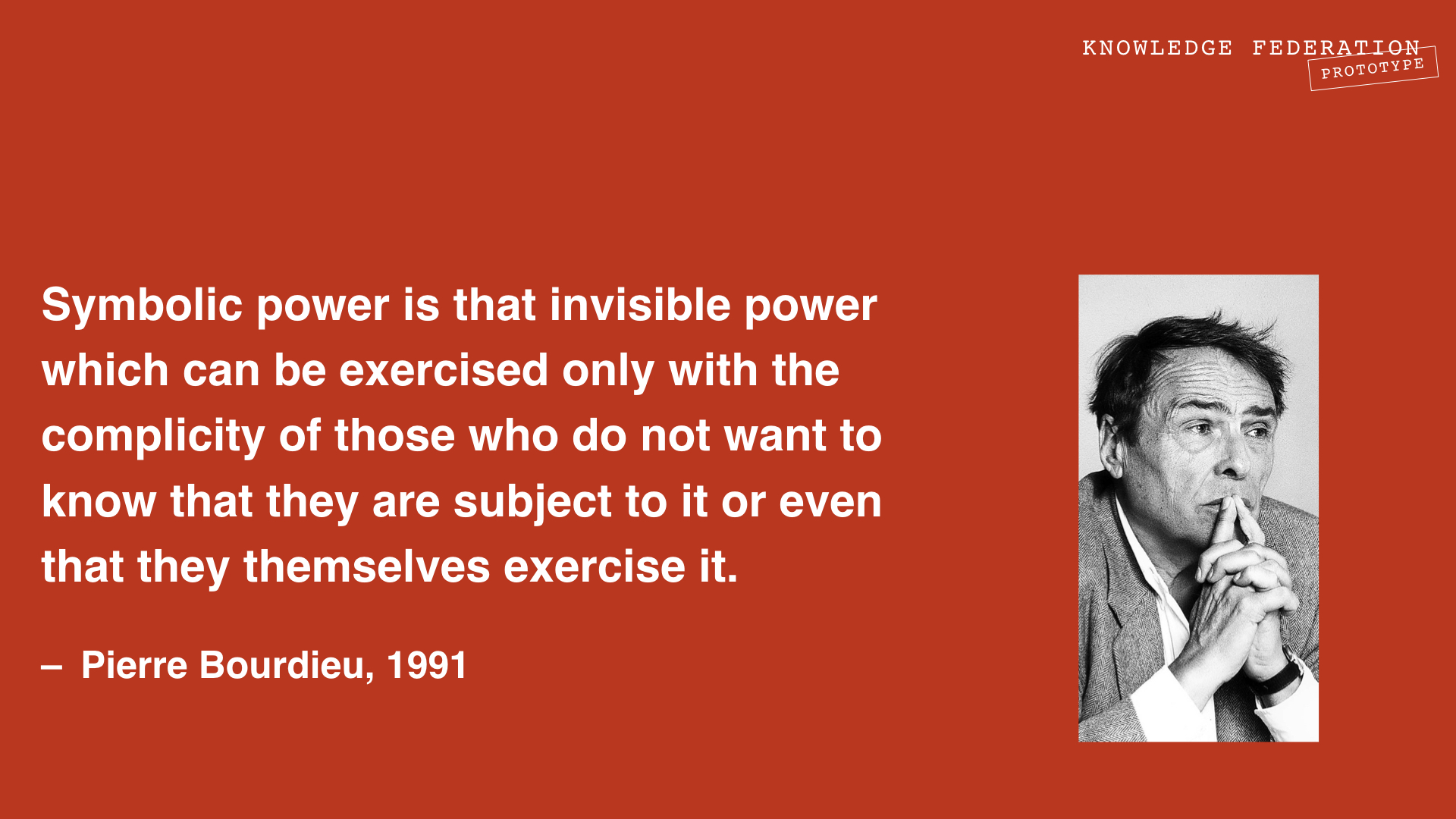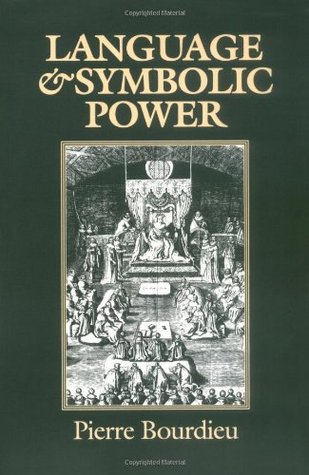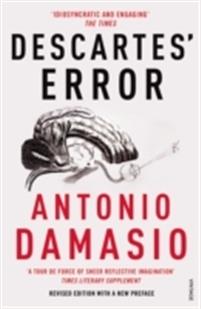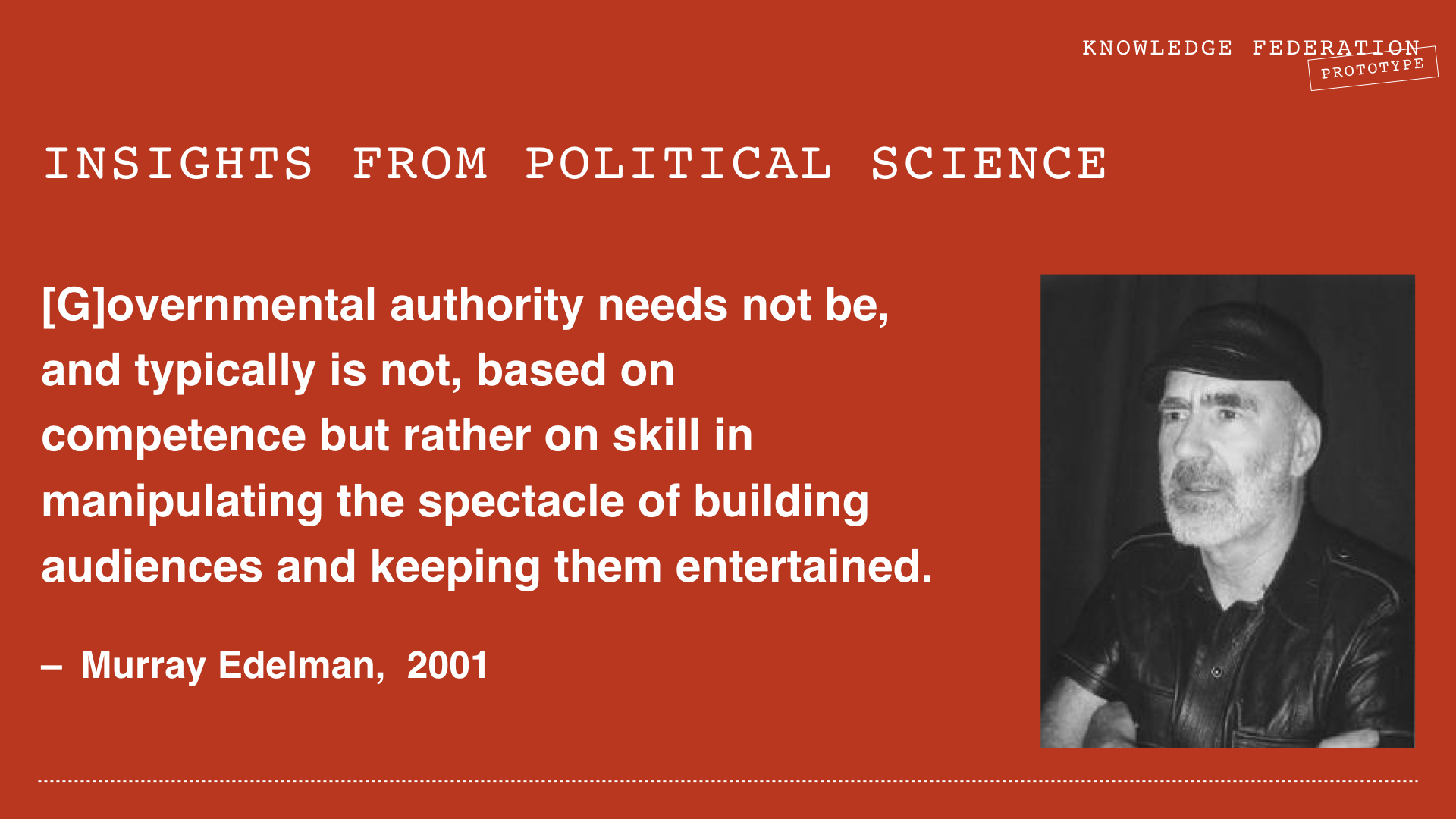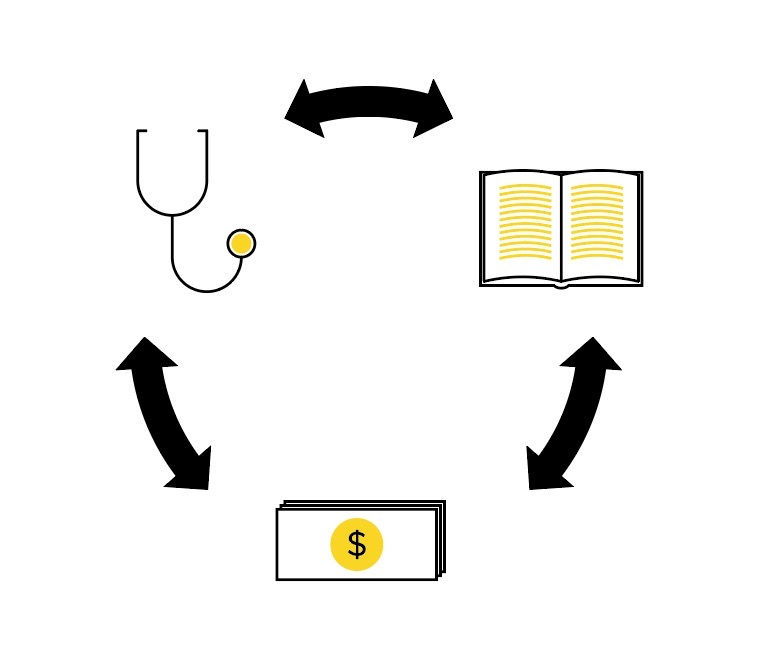Holotopia: Socialized reality
Contents
- 1 H O L O T O P I A: F I V E I N S I G H T S
- 2 Socialized reality
- 2.1 Stories
- 2.2 "Reality" is a myth
- 2.3 "Reality" is an instrument of socialization
- 2.4 Socialization in theory
- 2.5 Socialization in practice
- 2.6 Socialized reality in popular culture
- 2.7 Ideogram
- 2.8 The mirror points to a leverage point
- 2.9 Keywords
- 2.10 Academia
- 2.11 Dialog
- 2.12 Homo ludens
- 2.13 Truth by convention</p></h2></div> <p>Reification of "culture", "science", "democracy" or anything else as the existing or traditional implementations of those abstract ideas binds us to the traditional order of things, and effectively inhibits a cultural revival or paradigm change.</p> <p> Truth by convention is the radical alternative. It's truth that suits the design order of things. It is the new foundation stone, to consistently replace reification. Truth by convention is offered as the 'Archimedean point' for giving knowledge once again the power to 'move the world'. </p> <p>Three points need to be understood: truth by convention makes information completely independent of "reality" and tradition provides a rock-solid or incontrovertible foundation provides a completely flexible foundation for creating truth and meaning (a convention is "true" only in the context where it's provided, and only until further notice) </p> </div> </div> <h2>Design epistemology</h2> <p>In the context provided by the mirror metaphor, the truth by convention is what enables (in an academically rigorous way) the metaphorical 'step through' the mirror. </p> <p>Design epistemology is an epistemology defined by convention. This epistemology is exactly what the Modernity ideogram is suggesting—information, and the way we handle it, are considered as pieces in a larger puzzle or puzzles. And evaluated and treated accordingly.</p> <p>Design epistemology is what orients knowledge work on the other side of the mirror.</p> <h2>Implicit information</h2> <p>Information is defined as "recorded experience", and as such it has an essential function. The Earth may appear to us like a flat surface; but someone has traveled around it; someone else has seen it from the outer space. And so we can know that the Earth is roughly a sphere.</p> <p>The point of this definition is also that any form of recorded of experience is information. A chair can be (or more precisely can have an aspect of) information—being a record of human experience related to sitting, and chair making. So information can be explicit (if something is explicitly stated or claimed), or implicit (in the mores of the tradition, artifacts, beliefs, shared values etc.). </p> <p>By including implicit information, we both give citizenship rights to mores, artifacts, customs, architecture and various other forms of cultural heritage as embodying and hence encoding implicit information, and hence rescue them from oblivion and destruction by turning them into objects of federation preclude deceptive, fake information, which instead of embodying human experience for the purpose of informing others, it socializes us in ways that suit the power structure. </p> <h2>Symbolic action</h2> <p>We adopted the keyword symbolic action pretty much from Murray Edelman, with minor modifications. Having been socialized to consider the existing order of things (or the power structure) as the reality, and at the same time being aware that "something must be done", we conceive our action in a symbolic way (which makes us feel we have done our duty, without really affecting the power relationships and hence having impact): We write an article; we organize a conference...</p> <p>The creation of prototypes—a goal that naturally follows from the design epistemology—is the alternative. We federate information all the way into systemic prototypes, which are designed to have impact. This "restores agency to information, and power to knowledge".</p> <h2>Power structure</h2> <p>We can now briefly revisit the definition of power structure we gave with the Power Structure insight, by adding what's been told here. </p> <p>The Power Structure ideogram, shown on the right, depicts our 'political enemy' as a structure comprising power interests (represented by the dollar sign), our ideas about the world (represented by the book), and our own condition of wholeness (represented by the stethoscope). </p> <p>Throughout history revolutions resulted when people understood the issues of power and justice in a new way. We are witnessing a spectacular and unexpected turning point in this history: That we are the enemy! And that we are socialized to be our enemy!</p> <p>The proposed action—to learn to collaborate, and to take our socialization into our own hands and approach it creatively—is naturally seen as our next evolutionary step.</p> Power Structure ideogram <h2>Religion</h2> <p>This keyword points to an answer to the next obvious question: Is competition really part of "human nature"? Or do we have another side in our "nature", which can be elevated through culture, as deliberate socialization? </p> <p>We adapted the definition provided by Martin Lings, roughly as follows. Notice that this definition, just as our other definitions, is purely by convention; and that it relies on nothing but observations, or "phenomenology". </p> <p>Imagine the kind of wheel one sees in Western films. The points where the spokes meet the rim are labeled by (what we call) archetypes: "Truth", "Justice", "Beauty" and so on. In this definition, archetypes are, simply, what has historically helped people overcome ego-centeredness, and serve the humanity, and its cultural evolution.</p> <h2>Prototypes</h2> <h2>Holotopia</h2> The Holotopia prototype, which (while building upon a series of experiments we've conducted before) is in its design phase, will serve as a vehicle for implementing the vision it is pointing to.</p> <h2>Key Point Dialog</h2> <p>As mentioned, the initial step we are proposing for holotopia development is a series of dialogs. Part of the story is to go back to the original values, and to Aristotle... Another part is to build upon the important work of David Bohm and others, as we have just seen—and by doing that to begin recreating our collective mind, as we have just seen. To prepare for this task, we have done a series of <prototypes> and experiments under the shared name Key Point Dialog.</p> <p>A key point is, simply, "a way to change course"; it is an insight that can lead to a direction change in a community. When capitalized, the Key Point is the Big key point–a one that can lead to a global shift. And so the challenge that motivates this prototype is to structure the communication within a community so that its members jointly see the key point. </p> <p>David Bohm's original idea, his "dialogue", is a slow-moving event. It is designed not to have a purpose; the participants check all their agendas at the entrance door, and do their very best to let the "dialogue" take its own spontaneous course.</p> <p>What we did was to, metaphorically speaking, turn Bohm's "dialogue" into a high-energy cyclotron.</p> <p>Long story short, the key point dialog is composed of a community's opinion leaders (the people who are qualified, trusted, by their role accountable... to set directions). They are physically placed into a context, which symbolically places them into the context of our times and conditions (by federating relevant insights). In the center of the circle a piece of evidence is placed, which challenges the current direction and requires a new one. An 'amplifier' (implemented by suitable media technology) is also present in space and online, so that if and when the circle begins to 'resonate' with new tones, as 'stricken' by the evidence provided in the context, they are spread into the community, at which point the dialog becomes properly public.</p> <p>Several runs and improvements of the key point dialog were implemented over the years, of which we name the following:</p> Municipality key point dialogs in Norway (KommuneWiki project) was developed to add the capability to reassess the dominant (power structure-induced) values and lifestyle patterns to the conventional social-democratic repertoire of Norwegian municipalities (which bear the suggestive name "kommune" or communes) The Cultural Revival Dialog Zagreb 2008 had all the offline elements described above, and the explicit goal to address Aurelio Peccei's core proposition, which motivates holotopia The Tesla and the Nature of Creativity TNC2015 dialog in Belgrade added also the 'amplifier' or media infrastructure—represented by video streaming, photography, TV, and a public dialog organized on DebateGraph. <p>See the summary here.</p> <h2>Polyscopic Modeling definition</h2> <p>This is a methodology definition prototype: Instead of us basing our work with knowledge on myths, we create a written convention, a methodology—which can be continuously updated, when the axiom it embodies no longer suit; or, simply, to create an approach to knowledge that serves a different purpose. </p> <p>This methodology is, of course, a foundation for an approach to knowledge that might suit the order of things 'on the other side of the mirror'. A copy of the article where Polyscopic Modeling methodology is defined is provided here.</p> <h2>Visual Literacy Definition</h2> <p>This prototype illustrates several ideas and tools of considerable strategic and tactical potential. The main one is to replace reification and tradition (or metaphorically 'candles') as determining the direction, and using a federated principle (rule of thumb, overarching insight). And hence "restoring agency to information, and power to knowledge"—and to the people creating them of course.</p> <p> The real story may need to be told, but meanwhile, here are some preliminary sketches. So think about a whole community of researchers doing work on a theme that just couldn't be more needed by the society. And yet being virtually of no real use to the society. The underlying problem being all those inherited fundamental and institutional incongruences, which we've been talking about all along.</p> The story
H O L O T O P I A: F I V E I N S I G H T S
Socialized reality
The Enlightenment was before all a change of epistemology. An ancient praxis was revived, which developed knowledge of knowledge. On that as foundation, a completely new worldview emerged—which led to "a great cultural revival", and to comprehensive change. On what grounds could a similar chain of events begin today?
From the traditional culture we have adopted a myth incomparably more subversive than the myth of creation. This myth now serves as the foundation stone, on which the edifice of our culture has been constructed.
Stories
"Reality" is a myth
How to begin a cultural revival
We have come to the pivotal point in our story.
We talk about "Galilei in house arrest" to illustrate a central point—When our idea of "reality" changes, everything else changes as a consequence and most naturally. We asked, rhetorically, "Could a similar advent be in store for us today". We shall here see an affirmative answer to this question.
The theme is central; we shall take it as concisely as we are able, without sacrificing the rigor and the necessary details.
Language, truth and reality
We (as society, and as academia) have made a grave but understandable and forgivable error. This error now needs to be corrected.
This error can easily be understood when we consider how much the belief that "truth" means "correspondence with reality" is ingrained in our 'cultural DNA'; and even in our very language. When I write "worldviews", my word processor underlines the word in red. Since there is only one world, there can be only one worldview—the one that corresponds to that world. The word "worldview" doesn't have a plural.
A consequence is another error—the belief that a "normal" person sees the "reality" as it truly is. That "good", "true" or "scientific" information is the information that shows us a piece of that reality, so that we may ultimately know "reality" completely.
We are about to see that this myth is what holds us back from engaging in "a great cultural revival", which is overdue. And that relevant academic insights, which update our knowledge of knowledge, demand that we abandon this myth.
It will follow that "a great cultural revival" will follow naturally from the knowledge we own—as soon as we do our academic job right.
"Correspondence with reality" cannot be verified
In this very concise prototype sketch of the holotopia and the holoscope, Einstein plays the role of an icon of modern science. Our goal being to create, propose and put to use a federation procedure that can take us all the way to "a great cultural revival", we say "let's assume that Einstein did the necessary federation" (which we as culture eventually need to be able to do) and we let him be the spokesman for "modern science".
In "Evolution of Physics", Einstein and Infeld explained why "correspondence to reality" cannot be rationally verified, by using the parable of a closed watch. Einstein, furthermore, held the position that the belief that the results of our speculation or reflection correspond to reality is a common product of illusion. Both arguments are summarized and commented [here].
Since our goal is not to give a new "objectively true reality picture", but only to submit a legitimate way of looking at our theme, nothing more needs to be said.
Our culture is founded on a myth
We define myth as a popularly relied on but unverified belief, which has certain social and psychological purposes.
Our task being to find a solid foundation stone for developing a culture, or in other words a criterion for distinguishing "truth" (that is, "good" information or knowledge) from illusion, deception and conceptional mayhem, we must ask—Why use a criterion ("correspondence with reality") that cannot be verified? And which is itself a product of illusion?
"Reality" is an instrument of socialization
"Reality" is a construction
Researchers showed that what we call "reality" is constructed by our sensory organs and our culture; understanding the existence, the nature and the consequences of this construction provides us most valuable clues clue for evolving further.
We illustrate this point by a few references.
Evidence from natural sciences
In the 19th century it was natural to consider the human mind as a camera obscura—a perfect recording device, which reflects the outside world in an objective sense. But in the 20th century the researchers were able to looked into the supposed camera. They reached a completely different conclusion. We represented them by Humberto Maturana and Jean Piaget, see our commentary that begins here.
Evidence from sociology
Here Pierre Bourdieu's keyword doxa will provide us the clue we need.
Bourdieu adopted from Max Weber, and whose usage dates all the way back to Plato (which suggests that doxa is profoundly connected with the academic tradition—a point we shall come back to later). the academia's history, which we'll come back to. Bourdieu uses this keyword to point to the experience—that the societal order of things we happen to live in constitutes the only possible one. "Orthodoxy" leaves room for alternatives, of which ours is the "right" one. Doxa ignores even the possibility of alternatives.
Another point of reference is Berger and Luckmann's classic "Social Construction of Reality", where a theory of the process of social reality construction is contributed (see it commented here). Their keyword "universal theory" deserves a special attention—as an explanation how "reality" has served, historically, to legitimize given power relationships and social order.
Socialization in theory
Federation vs. socialization
We shall here improvise a theory of socialization—and offer it as a stepping stone for building the holotopia. In our opus, and notably in The Paradigm Strategy poster, which was a prelude to holotopia (described here), the mechanism of socialization is represented by a tread comprising three vignettes. We named them by their chief protagonists: Odin the Horse, Pierre Bourdieu and Antonio Damasio (see a summary here). We here highlight the main points.
Odin the Horse
The longer story will illustrate the turf behavior of Icelandic horses living in nature, by describing a concrete event. We here only highlight the image of two horses in spectacular and manly body-to-body interaction, running side by side with their long hairs and hairy tails flagging in the wind, Odin the Horse pushing New Horse toward the river, and away from his herd of mares.
Bourdieu and Symbolic Power
We'll need two points from Bourdieu's theory of "symbolic power", the first of which is presented by the card above: Symbolic power tends to be invisible and ignored by everyone concerned!
A story illustration, which we have not told in sufficient detail yet, is about Bourdieu in Algeria, during Algeria's war against France for independence, and immediately after. There the circumstances allowed Bourdieu to observe how power morphed—from the traditional censorship, torture and prison during the war, to symbolic power following the independence.
To see what this all means, imagine a young Kabylian man who, driven by economic necessity, moved from his village to a city—and who promptly finds out that his entire way of being, which back home served him well, here makes him all but dysfunctional. Not only his sense of honor, but even his very way of walking and talking seem unappealing even to the young women who moved from his home village—who saw something else in the movies and the restaurants.
Bourdieu was reminded of his own experience—when he arrived to Paris, as an unusually gifted "hillbilly", to continue his education.
The second point we need from Bourdieu is highlighted by the cover of his book "Language & Symbolic Power", shown on the right.
The point is that not only are relationships of empowerment and disempowerment deeply coded in our language or more generally "culture"—but that this language is "symbolic", or pre-rational. And indeed, on the cover of the book we see a turf. In Odin the Horse story the turf was a physical piece of land that Odin was defending. But in a culture, the structure of the 'turf' is not only symbolic, but also far more complex—as much as our culture is more complex than the culture of the horses. Yet in spite of that, the similarity is striking—when we observe that the power relationships are neatly organized in space, in a manner that corresponds to their organization in the idea world; in our social "reality".
The king enters the room, and everyone bows. Naturally, you do that too. By nature and by culture, we humans are predisposed to do as others. Besides, something in you knows that if you don't bow down your head, you might lose it.
What is it, really, that makes the difference between "a real king", and an imposter who "only believes" that he's a king? Both consider themselves as kings, and behave accordingly. But the "real king" has the advantage that everyone else has been socialized to consider him as that.
While a "real king" will be treated with highest honors, an imposter will be incarcerated in an appropriate institution. Even though a single "real king" might have caused more suffering and destruction than all the imposters, and indeed all the historical criminals and madmen.
From Bourdieu's theory we'll highlight only two more of his keywords: habitus and field (which he also called "game"). The habitus is a set of embodied predispositions, manners of thinking and behaving. The king has his own habitus, and so does the page. Think of the habitus as a cultural "role", analogous to a role in a theatre play. But you must also see it as a power position. Think of the field as a "culture" of a certain social group (a king's court, an academic discipline...), where through innumerably many carrots and sticks everyone gets "put into his place". On the symbolic 'turf'.
Damasio and "Descartes' Error"
Bourdieu's sociological theories synergize most beautifully with an all-important insight experimentally proven by cognitive neurosurgeon Antonio Damasio.
Damasio contributes a point—deftly coded into the very title of his book "Descartes' Error"—that we are not rational decision makers. The very contents of our rational mind (our priorities, and what options we are at all capable to conceive of and consider) are controlled by a cognitive filter—which is pre-rational. And embodied.
Damasio, in other words, explained why we don't get up wondering whether we should take off our pajamas and run out into the street naked (although this may be completely normal in some completely different culture). Our embodied "reality" controls the very content of our rational mind!
Please do read the brief but centrally important anecdotal illustration of Damasio's all-important scientific insight, which we provided here.
Damasio's theory completes Bourdieu's "theory of practice", by contributing the physiological mechanism by which the body-to-body socialization to conform to a given "habitus" extends into a doxa—that the given order of things, including our habitus, is just "reality".
Our key point
We have all been socialized to live in the "reality" where some are winners (kings) and others losers (serfs). But another way to see this is possible—where all of us are losers! And where the whole absurd game is indeed a result of a pathological and atavistic human tendency—to seek domination over others.
Odin the Horse does not "really" need all "his" mares. On the contrary. The reason why the farmer decided to introduce New Horse was that Odin was getting too old. So another social "reality" may be incomparably better for everyone. But Odin does not see any of that. In his primitive horse mind, he only sees that New Horse is intruding into "his" turf, threatening to privatize some of "his" mares, and Odin was going to stop that at all cost.
But we the people have a whole other side of our nature; pointed to, coincidentally, by Odin's very name.
Beyond this, there are realms of opportunities for developing culture, and improving our condition. This is what holotopia is about. But let's come back to this theme in a moment.
Socialization in practice
We got it all wrong
But this coin, socialization, has two sides. On the one side is "symbolic power". And on the other—culture!
Did Moses really return from Mount Sinai with ten commandments, carved in stone by God himself?
For centuries, our ancestors considered this a fact. But to a modern mind, the fact that this would violate certain "laws of physics" takes precedence.
When Nietzsche observed, famously, that "God is dead", he did not of course mean that God physically died. Or that the belief in God lost its foundation in our culture, which was obvious. What he meant was that we, as culture, lost a range of functions that had been founded on the belief in God.
An example are principles to live by; guidance to conduct our daily affaires. But not the only, or even the main one.
Think about entering a cathedral—an immersive experience combining a variety of media, including architecture, painting, music, ritual... The point was not to know how really the world originated, but to socialize the people to think and feel and behave in a certain way. To be in a certain way.
So Nietzsche's real, subtle and all-important point was that we have rebelled; we have left our "father's" home. By doing that we have acquired not only a new freedom, but also a new responsibilities. We must now provide for ourselves.
You might be guessing our answer to our question, whether it was "really" God who wrote those tablets. The answer is that the question is irrelevant. We got it all wrong. The core issue was never really what's the "reality"; the issue was our socialization. Or more precisely, and more to the point—the reproduction and creation of culture.
Having left our "father's" home, having left the tradition, we must now do that work, of creating culture. We must now do that work ourselves.
How are we doing in that new role?
Pavlov and Chakhotin
Pavlov's experiments on dogs (for which he was awarded the Nobel Prize) may provide another suitable metaphor for socialization
.Having worked with Pavlov in his laboratory, Sergey Chakhotin participated in the 1932 German elections against Hitler. He noticed that Hitler was not arguing his points rationally (which would indeed be hard to even imagine), but socializing the German people to accept his ideology and agenda. Chakhotin advocated, and practiced in those elections, the use non-factual or implicit techniques to counteract Hitler's approach (see an example on the right). Adding "t" to the familiar Nazi greeting produced "Heilt Hitler" (cure Hitler).
Later, in France, Chakhotin explained his insights about socializing people in a book titled "Viole des foules par la propagande politique". We offer it as a testimony, and a theory of disempowerment and dehumanization of masses of people by what we are calling socialization; see our comments here.
Freud and Bernays
While Sigmund Freud was struggling to convince the European academics that we, humans, are not nearly as "rational decision makers" as they were inclined to believe, his American nephew Edward Bernays had no difficulty convincing the American business that exploiting this characteristics of our psyche is—good business! Today, Bernays is considered "the founder of public relations in the US", and of modern advertising. His ideas "have become standard in politics and commerce".
The four documentaries about Bernays' work and influence by Adam Curtis (available here) are highly recommended.
Edelman and Symbolic Action
Already in the 1960s the researchers knew that the conventional mechanisms of democracy (such as the elections) don't serve the purpose they were assumed to serve (distribution of power)—because, as field research showed, the voters are unfamiliar with proposed policies, the incumbents did not fulfill electoral promises etc. This does not mean that the elections don't have a purpose, Edelman observed; it's just that their purpose is different than what's believed. Their purpose is, in Edelman's parlance, symbolic—to legitimize the governments and policies; by making people feel they were asked.
Have you wondered what makes one qualified to be the president of the United States?
Edelman had a career-long mission. To help us understand the world we live in, he contributed a thorough study of "politics as symbolic action".
Socialized reality in popular culture
My American Uncle
As movies tend to, Alain Resnais' "My American Uncle" follows its characters through strained relationships with parents, career ups and downs and love-related hopes and disappointments. But "My American Uncle" offers also a meta-narrative, which (we propose) turns it into a new paradigm art project.
In that way, the movie federates a socially relevant insight of a researcher, neuroscientist Henri Laborit. At the end of the movie, Laborit appears on the screen in person, and summarizes this insight:
The unconscious is a formidable instrument. Not only because it holds all that we have repressed, things too painful for us to express, because we'd be punished by society. But also because all that is authorized, even rewarded by society, has been placed in our brain since birth. We're unaware of its presence, and yet it guides our actions. This unconscious, which is not Freud's, is the most dangerous. What we call the personality of an individual is built up from a grab-bag of value judgments, prejudices and platitudes. As he grows older, they become more and more rigid, less and less subject to question. Take away one single stone from this edifice, and it all crumbles. The result is anguish. And anguish stops at nothing, neither murder, nor genocide, nor war, in the case of social groups.
We are beginning to understand by what mechanism, why and how, throughout the history and in the present, the hierarchies of dominance have been established. To go to the moon, we must know the laws of gravity. Knowing the laws of gravity doesn't make us free of gravity. It merely allows us to utilize it.
Until we have shown the inhabitants of this planet the way their brain functions, the way they use it, until they know it has always been used to dominate others, there is little chance that anything will change.
The Matrix
The movie The Matrix is an obvious metaphor for socialized reality—where the "machines" (alias power structures) are keeping people in a media-induced false reality, using them as a power source. This excerpt require no comments.
Morpheus: The Matrix is everywhere. It is all around us. Even now, in this very room. You can see it when you look out your window or when you turn on your television. You can feel it when you go to work... when you go to church... when you pay your taxes. It is the world that has been pulled over your eyes to blind you from the truth.
Neo: What truth?
Morpheus: That you are a slave, Neo. Like everyone else you were born into bondage. Into a prison that you cannot taste or see or touch. A prison for your mind.
Oedipus Rex
King Oedipus was not really a young man troubled by sexual attraction to his mother, as Freud may have made us believe. His problem was a conception that he was socialized to accept as reality—which drew him ever closer to a tragic destiny, as he was doing his best to avoid it.
A parable for our civilization?
Ideogram
The mirror points to a leverage point
As a visual shorthand, the Mirror ideogram points to two fundamental changes in the foundations of our pursuit of knowledge. And the academia's situation that resulted from them.
The end of innocence
We have learned that we are not "objective observers".
It is no longer legitimate to claim the innocence of "objective observers of reality". By seeing ourselves in the mirror, we see that it has along been just us looking at the world, and creating representations of it.
The beginning of accountability
We are no longer living in a tradition—which to our ancestors provided orientation and guidance in all relevant matters. Information has thereby acquired a new and all-important role.
The mirror symbolizes this by suggesting that when we see ourselves in the mirror, we see ourselves in the world. Hence we see ourselves as part of the world; and as accountable for our role in it.
We must pause and self-reflect
As a symbol for the situation, which the academia's evolution so far has brought us to, the mirror demands that we interrupt the academic business as usual and self-reflect—about the meaning and purpose of our work. A genuine academic dialog in front of the mirror is the core of our practical proposal, our call to action.
Enormous gains can be made
The change of the relationship we have with information, which is the core of our proposal, is here symbolized as a perfectly feasible yet seemingly magical next step—through the mirror!
Hence our overall proposal—the way we have federated the results of The Club of Rome as summarized by Peccei—is that the academia should step through the mirror; and guide our society to a completely new reality, which awaits on the other side.
We have coined the keywords holoscope and holotopia, to point to the academic and the socio-cultural reality 'on the other side'.
Keywords
Academia
Our proposal is addressed to "the academia", where the academia is defined as "institutionalized academic tradition". By pointing to Socrates and Galilei as this tradition's progenitors and iconic representatives, we show that resisting degenerate socialization, even by risking one's own life, has been what the academic tradition was all about since its inception.
As the dialogues of Socrates, as Plato recorded them, might suggest—the academia has achieved that purpose by using knowledge of knowledge or epistemology to liberate us from false or socialization-induced beliefs.
Dialog
The dialog is the attitude and the manner of communication that suits the holoscope order of things. And it is also more—a strategy to re-create our collective mind, and make it capable of thinking new thoughts.
By building on the "Socratic method" or "midwifery" or "maieutics", the dialog is way to restore academia's original roots and values. By building on David Bohm's praxis of "dialogue", it acquires an agile contemporary meaning, and inherits an invaluable body of insights (see it outlined here). In Bohm's understanding, the "dialogue" is a form of cognitive and social therapy, necessary for shifting the paradigm, evolving further, and resolving the contemporary issues. Bohm conceived it as the antidote to socialization and power structure.
In addition—the dialog, as we are using this keyword, includes a spectrum of strategic and tactical tools. By designing for the dialog, we rule out certain practices that the power structure has used effectively to frustrate and hamper attempts at change. We create conventions of conduct. We use the camera as feedback... We turn events into spectacles—where the point is not to win in a discussion, but on the contrary, where the attitude to win in the discussion is derogating...
</div> </div>
Homo ludens
The homo ludens is the socialized human. He is the product of power structure. The homo ludens does not seek knowledge. He does not even care about the facts. He adjusts to "the field". He sees what (as he knows) people in power, or in his "field", want to hear. He looks for, and does, "what works".
It is interesting to observe that the homo ludens has a surrogate epistemology, and even an ontology, which leads him to entirely different worldviews and conclusion than the epistemology that the homo sapiens has. For instance, both homo ludens and homo sapiens see himself as the epitome of human evolution, and the other as about to go extinct. The homo sapiens looks at the data; the homo ludens just looks around.
It is not difficult to see that the homo ludens behavior was exactly what The Club of Rome was up against. In the five-minute trailer for The Last Call documentary (which follows the authors of The Limits to Growth through their ensuing struggles to have themselves heard) has two such episodes on record (see them here and here).

